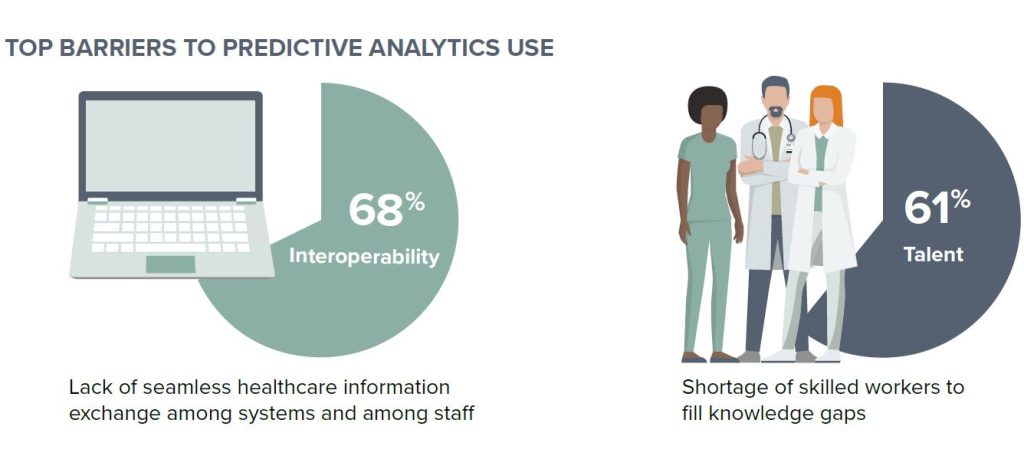Center for Connected Medicine survey explores the promise and challenges of big data
Hospitals and health systems want to put their data to work and they know predictive analytics could be a key solution to some of the problems plaguing health care. But despite the buzz around predictive analytics, there are obstacles for health systems that want to turn their big data into actionable insights.
The Center for Connected Medicine (CCM), a thought leadership hub jointly operated by GE Healthcare, Nokia, and UPMC, has released a survey of health system leaders that offers some insights on those obstacles and provides a snapshot on the current use of predictive analytics at hospitals and health systems.
Approximately 7 out of 10 hospitals and health systems say they are taking some action to formulate or execute a strategy for predictive analytics, according to the CCM-sponsored survey, which was conducted by HIMSS Media. This is not surprising given the focus in health care over the past decade to harness the large volumes of data to make improvements in health outcomes and cost reductions – and considering the hype surrounding predictive analytics as a solution for health care.
In fact, the top use cases driving interest in predictive analytics are enabling the delivery of more cost-effective care, reducing hospital readmissions, identifying at-risk patients, and providing more proactive, preventive care, according to the CCM/HIMSS survey.
But despite the strong interest by health care providers to employ predictive analytics, few health systems can say they have widely implemented full-fledged analytics that identify the likelihood of future events.

Why is this? According to the CCM/HIMSS survey, two of the top challenges involve talent and lack of interoperability. Put another way, health systems have trouble getting access to all the necessary data in a useful and standardized format. And they don’t have the people in place to apply statistical algorithms and advanced machine learning techniques for the complex practice of medicine.
Pamela Peele, PhD, Chief Analytics Officer at UPMC Enterprises, said she doesn’t know of a health system that isn’t feeling these pain points.
“This isn’t banking, finance or retail. This is medicine,” Dr. Peele said. “The stakes are different and the data are different.”
There’s also the issue of the substantial financial investment that many hospitals and health systems have made in their EHRs, which they cannot “rip and replace.”
“Hospital systems have invested in a number point solutions over the years that were never stood up to be part of a holistic integrated data infrastructure,” Dr. Peele said.



